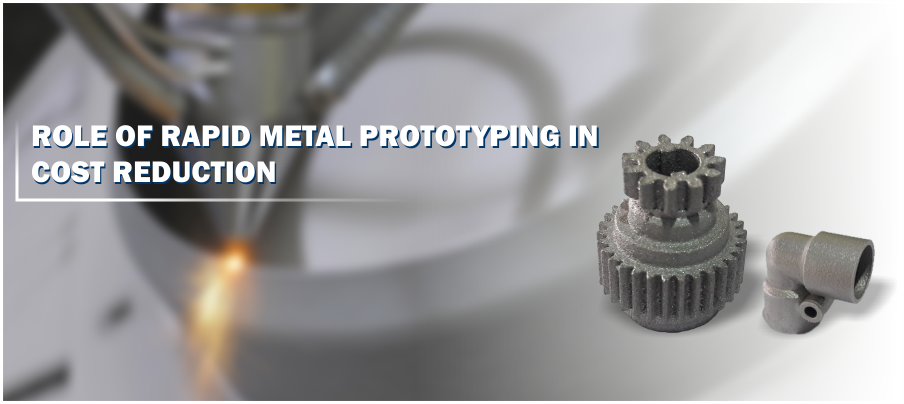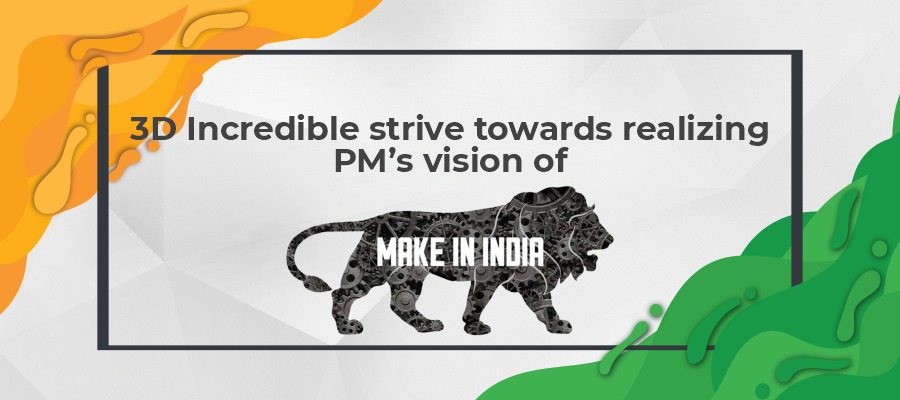Role of Rapid Metal Prototyping
The manufacturing world has been revolutionized by the emergence of rapid metal prototyping, an umbrella term for a range of manufacturing techniques that can fabricate prototypes and parts in a quick and cost-effective manner. This method has grown immensely over the past few years with the growth of additive manufacturing technology. It has become more affordable and accessible and has become an integral part of product development across all industries.
Rapid metal prototyping through 3D Printing is a process that turns digital designs into a physical part, allowing companies to develop and test the designs of products quickly. The concept, however, isn’t limited to prototypes; many end-use products are being made this way too. In this article, we will see how metal 3D printing technology can help in reducing the cost of prototypes and production.
Why Should You Use Rapid Metal Prototyping?
-
-
Bringing Design Concepts to Life:
-
First and foremost, one of the biggest advantages of rapid metal prototyping is that it allows you to realize design concepts in the physical world. The ability to create physical prototypes of a product or part before going for mass production is crucial for organizations in many ways. Rapid metal prototyping provides an affordable and quick way to iterate your design for mechanical testing and to ensure the dimensions match the designer’s intentions.
-
-
Quick Changes Possible:
-
Not only does rapid metal prototyping help bring your design concepts to life but it also enables designers and engineers to make quick changes to their product or part on a whim.No matter how much in detail you study about a part in digital files, it cannot match the physical hands-on user experience. When the part is in your hands, you can better judge if there’s any room for improvement in the design or you can optimize to reduce mass production costs or improve the user’s experience. With rapid metal prototyping, you can modify or repair design and have it iterated in the nick of time.
-
-
Part Customization:
-
Rapid metal prototyping also makes it possible to develop highly customizable parts and products that meet individual requirements. Only in case of high accuracy machining is required, it’s easy and relatively cheap to personalize and reiterate your model. Unlike, traditional manufacturing techniques where even minor changes in a design can alter the entire production process, rapid prototyping methods like 3D printing can perform the changes without impacting the overall manufacturing process. This is a major benefit for both companies and consumers, as parts can be given a highly personalized touch.
-
-
less design iteration
-
With rapid prototyping processes like AM, you are able to physically produce a part or product and ensure that there are no design flaws. By using plastic or metal material that resembles the one that will be used to produce the final product, you can conduct physical tests to see if the properties and part strength meet your requirements. This allows companies and manufacturers to discover flaws or functionality issues in the early stages of the product development stage, saving an immeasurable amount of time and money.
-
-
Reduces the lead time of manufacturing
-
Another reason for using rapid prototyping technology is the speed; as it reduces the production time from years and months to weeks and days. This technology eliminates traditional manufacturing processes like injection molding, machining, forming, and joining to create an object.
Rapid metal prototyping can allow you to improve your products and manage the manufacturing cost. You can create lighter devices; work on the design to get more efficient parts, more adapted to your use. Using rapid prototyping with 3D printing considerably helps to reduce costs on different levels, let’s see how.
-
-
Reducing Tooling Investment:
-
3D Printing is a tool less process and eliminates the need for dies/ tools to produce a part or product. This technology allows you to save money as it eliminates assembly processes completely by printing products in one part. Thus it cut downs your costs when it comes to tooling.
-
-
Reduced Supply Chain Costs:
-
More the number of processes involved in the production of a part, more is the cost of production. 3D Printing eliminates the long supply chains that we have been seeing in the traditional manufacturing methods. Earlier, fixing design flaws included shipping the parts back and forth, which was a costly affair. Also, manufacturers had to wait for tools to arrive or buy new tools for the fulfilling specific design requirements, which is not required in Metal 3D Printing and helps in saving the money.
-
-
Prevents Mass-production Failure:
-
When designing a part or product for mass production, the ability to print a physical prototype to check its physical attributes and functionality is very crucial. Instead of realizing the mistakes during the mass production process, which can setback production time and costs, rapid metal prototyping with 3D printing makes it easy to repair any potential flaws in your design without having to invest a lot of money.
-
-
No Costly-Equipment Setup Required:
-
Rapid prototyping through 3D printing also eliminates the need to have a full-blown setup of different costly equipment as one 3D printing machine can be used to produce different types of prototypes. This consequently saves huge time, cost and efforts in the product development process.
-
-
Reduced Development Time:
-
Rapid prototyping with metal 3D Printing is an amazing method that helps you to do iterations in lesser time and for a lower price. Indeed, with traditional manufacturing methods such as injection molding, you will have to get a mold created which is an expensive and time taking process. While with 3D metal Printing, you just have to prepare a digital 3D file that you are free to modify to make different iterations in your product and simply print it. It is an amazing asset for product development process which gives you design flexibility and helps in saving time &money.
Conclusion:
In a nutshell, factors such as the reduction in development time, supply chain optimization, improved efficiency etc. play an important role in reducing the cost of prototyping through 3D Printing. So let’s make the most of this ever-growing technology to develop high quality and accurate prototypes.




